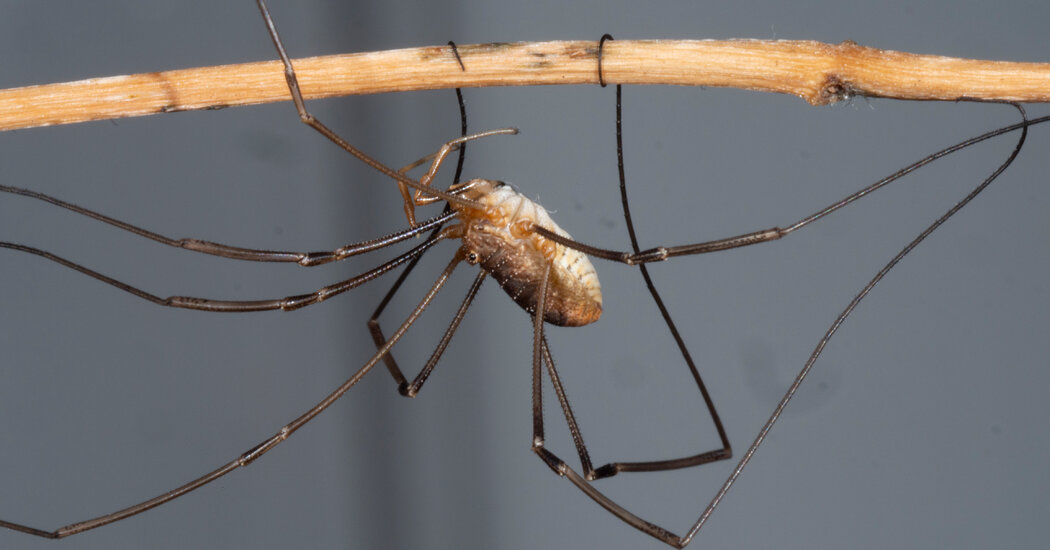The harvestman makes its way through the mossy woodland on eight spindly legs, delicate tentpoles supporting a plump body with two tiny eyes. These arachnids, sometimes called daddy longlegs, are cousins of spiders whose outdoorsy lifestyle sets them apart from the other creatures called daddy longlegs, which are more properly known as cellar spiders. They have other curious differences, too: The tips of a harvestman’s elegant limbs are flexible, allowing them to wrap around a twig like a monkey’s tail.
Harvestmen’s distance from spiders has made them appealing to geneticists curious about how arachnids evolved. In a paper published Wednesday in the journal Proceedings of the Royal Society B, researchers who sequenced the harvestman genome reported that the arachnids differ in key ways from spiders, and they described how certain genes tell those trademark legs how to grow.
The size of the harvestman genome was the team’s first focus. Ancestors of contemporary spiders experienced a duplication of their entire genomes at some point long ago, giving them more genes for evolution to work with. This might have contributed to greater diversity among spiders.
“There is this hypothesis that when you have duplicated genomes, the genes that are retained can have new functions,” said Vanessa González, a computational genomics scientist at the Smithsonian Institution who is an author of the new paper.
Some scientists have wondered whether such duplications might help explain some of the wild variety of the animal kingdom, said Prashant Sharma, a professor at the University of Wisconsin, Madison and also an author of the study. Complex genomes and more varied organisms might seem to go together.
But despite harvestmen’s variety — there are more than 6,000 species in the group — there is no sign of duplication in the harvestman genome, the researchers report. And horseshoe crabs, arachnids that had at least one genome duplication in their evolution, have only a handful of species.
“Arachnids really challenge this idea,” Dr. Sharma said. Having more genes might help organisms diversify, but only if environmental conditions and other factors line up correctly as well, he speculates.
In the harvestman genome, the team pinpointed a number of genes that are also known to control the development of legs in insect species. When some of the genes were repressed in harvestmen, said Guilherme Gainett, a graduate student in Dr. Sharma’s lab, two or more pairs of legs became not legs but rather pedipalps, small appendages that arachnids use to manipulate food and grasp mates.
The prehensile tips of a regular harvestman’s legs, which Dr. Sharma compared to fingers with a hundred extra knuckles, were found to be under the control of another gene. Lowering its levels experimentally resulted in just one long segment, incapable of bending.
These morphing appendages help reveal to the researchers the invisible map of the creature’s development, showing how its body is built with familiar genes used in the harvestman’s own particular ways.
In the future, the team hopes to use their newfound knowledge of the genome to understand development in harvestmen and in other arachnids. For instance, the tiny structure near the harvestman’s mouth that is similar to a spider’s fang — what tells it what to become?
“We don’t know the first thing about what factors actually specify its identity,” Dr. Sharma said.
Source: Read Full Article
